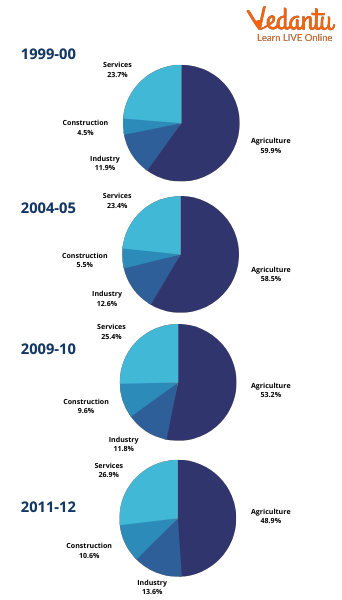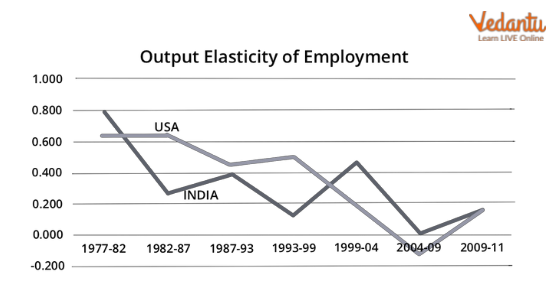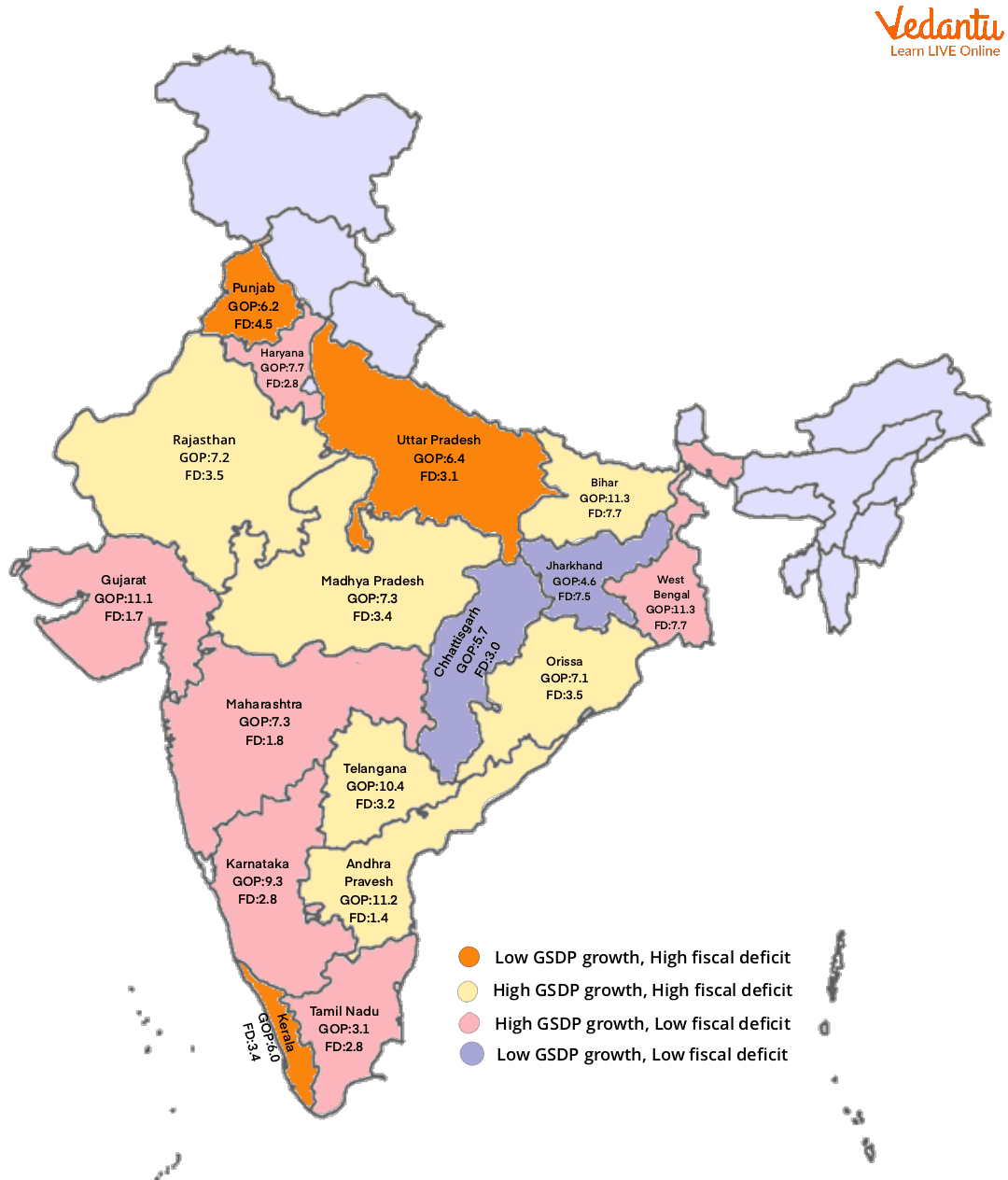




What Exactly is Jobless Growth?
People need to labour to support their families and themselves when a country's population grows. The economy must develop to hire everyone who wants to work. People searching for work will be unable to find it until there has been considerable economic progress. Individual employees with marketable abilities will always find jobs first, regardless of the economy. Those with less desirable skill sets will have more opportunities if job options are numerous.
Jobless growth is an economic phenomenon in which a macroeconomy grows without maintaining or declining its level of employment. Even when the economy expands without creating new jobs, unemployment stays persistently high. This generally happens when many people have lost their jobs, and the ensuing recovery is insufficient to absorb the jobless, under-employed, and newcomers to the labour market.
Employment Elasticity
Employment Elasticity measures the percentage change in employment associated with a one percentage point change in economic growth. The employment elasticity measures an economy's ability to provide work opportunities for its population as a percentage of its growth (development) process.

Employment Elasticity
Employment Elasticity of Growth
The employment elasticity shows the proportion of an economy's growth (development) process that goes toward creating jobs for its population. When the employment elasticity is 1, employment increases at the same pace as the economy. A value of 0 for elasticity means that employment does not increase at all regardless of economic expansion. Employment contracts as the economy expands, which is referred to as negative employment elasticity. This is important since it's a prevalent misconception that employment will expand with just economic development.
Two types of complaints are frequently levelled towards employment elasticity measurement:
The link between output and employment doesn't need to be one-way.
The idea of employment elasticity is true given a particular technological stage, pay rate, and set of policies.
The negative employment elasticity in agriculture suggests that individuals move out of agriculture and into other industries with higher wage rates. This movement of excess employees to other sectors in search of productive and profitable labour is required for inclusive growth. However, the manufacturing sector's negative employment elasticity was a reason for concern, especially given the sector's strong production growth.
Employment elasticity is a concise method of summarising the intensity of the increase in employment or the sensitivity of employment to output growth. It is also often used to track sectoral job creation potential and estimate future employment development.

Employment Elasticity of Growth
A Decade of Jobless Growth in India
During the recent decade (2001-11), the labour force growth rate (2.23%) was much larger than the growth rate of employment (1.4%), which was several times lower than the growth rate of the economy. According to Census 2011, the average annual growth rate of the economy was 7.7 per cent, while employment growth was only 1.8 per cent.
The 66th set of National Sample Survey Office (NSSO) data on employment in 2011 revealed that just 1 million jobs were added per year between 2004-05 and 2009-10, despite the economy growing at a record 8.43 per cent per year.
According to a 2015 Indian Labour Bureau report, 2,000 enterprises in eight tested industries created all of one lakh employment, a decrease from the four lakh created in 2014, even though growth in 2014 was lower than in 2015.
According to India's slowing job growth, the economy's "employment elasticity" is now close to zero - for every one-point increase in GDP, jobs grow by only 0.15 per cent. It was 0.39 fifteen years ago.
Reasons for the Increase in Unemployment
In India, growth is credited to the service industry, which has increased both employment and salaries. However, according to statistics, the agriculture sector employs 45 per cent of the population while contributing 15 percent to the GDP, and the service sector contributes the most to the GDP but employs less than 30 per cent. IT and financial services have been major drivers of service sector growth during the last two decades, yet neither of these industries is particularly labour-intensive. As a result, India's unemployment rate is increasing.
The labour-intensive industrial sector in India did not become the engine of growth. In truth, the knowledge-intensive services sector and some parts of the capital-intensive industry were India's growth engines. However, by definition, these industries did not generate a lot of jobs.
Manufacturing employment and output have been flat, while the labour-intensive portion of the formal manufacturing sector has shrunk, due to:
a. The formal industrial labour market's excessive rigidity and strict labour laws have made it difficult for firms to generate jobs.
b. About 25% fewer people are employed in organised industry as a result of the Industrial Disputes Act (World Bank Study).
c. More capital-intensive techniques of production are being adopted by businesses as a result of strict employee protection laws than would otherwise be necessary given current labour prices.
Because of this, India's trade framework continues to favour capital-intensive industries.
Indian manufacturing is not conducive to employment. Most of them are automated, and any job requires a high level of ability. They contribute to growth but may not always lead to employment.
Compared to large companies, MSME's labour intensity is four times higher. yet they do not receive favourable treatment in India; they have restricted access to capital and are confronted with other grave issues, which have constrained their ability to flourish.
Tax breaks, subsidies, and depreciation allowances are all based exclusively on the amount invested, not the number of jobs produced.
Slow progress in worker education and skill levels.

Jobless Growth in India
What Can be Intended to Eliminate the Jobless Growth Phenomenon?
The necessity of the hour is to integrate livelihood creation into development initiatives rather than simply portraying it as a natural byproduct of progress. It must be understood that organised manufacturing is no longer the answer to creating large-scale employment as it once was.
First and foremost, labour laws should be modified since, due to rigorous labour laws, corporations in India choose a capital-intensive production method in a nation where labour is plentiful.
Encouraging people's entrepreneurial impulses — whether they develop small-scale projects across the country or provide results through the Startup India or Stand-up India initiatives — will produce long-term rewards.
Job-intensive industries, such as food processing, should be encouraged.
MUDRA should be extended because it has the potential to be a game changer for the MSME sector, which can create needed jobs in India.
Conclusion
A growing economy without any jobs is a sign that the fundamentals of work for everyone are changing. Some employees will prosper because they have the qualifications and experience that expanding sectors want. Others will not be able to find a job until they acquire new skills and suffer long-term unemployment or underemployment.
If investors who are aware of the fundamental changes in the economy match the growth prospects in their investment portfolios, they will profit. Following the employment statistics by industry might make it easy to identify expanding industries. Then, a more thorough investigation might be conducted on the prospective businesses within that industry.
FAQs on Rising Unemployment: Jobless Growth and Employment Elasticity
1. What is meant by jobless growth, and how is it different from general unemployment?
Jobless growth is an economic phenomenon where a country's Gross Domestic Product (GDP) increases, but the level of employment does not see a corresponding rise, or may even decline. It signifies that the economy is growing without creating new jobs. This is different from general unemployment, which refers to the situation where individuals are actively seeking work but are unable to find it, regardless of whether the economy is growing or not.
2. What is employment elasticity, and how is it calculated?
Employment elasticity measures the responsiveness of employment to the growth in economic output (GDP). It indicates the percentage change in employment for every one percent change in economic growth. A low or near-zero elasticity means that even if the GDP is growing, it is not leading to significant job creation. The formula is:
Employment Elasticity = (% Change in Employment) / (% Change in GDP)
3. Why is India's economic growth often described as 'jobless growth'?
India's growth is often termed 'jobless growth' due to low employment elasticity across several key sectors. The primary reasons include:
- Dominance of the Service Sector: India's GDP is heavily reliant on the service sector, which is often less labour-intensive compared to manufacturing.
- Capital-Intensive Production: There is an increasing reliance on technology and machinery over manual labour to boost productivity, which increases GDP without creating many jobs.
- Structural Issues in Agriculture: The agricultural sector employs a large part of the population but suffers from disguised unemployment and contributes relatively little to GDP growth.
4. How does a focus on capital-intensive technology contribute to jobless growth?
A focus on capital-intensive technology directly contributes to jobless growth by increasing productivity without a proportional increase in human labour. Automation, advanced machinery, and AI can perform tasks more efficiently and at a larger scale than human workers. As a result, a company or an entire sector can significantly increase its output (contributing to GDP growth) while hiring fewer people or even reducing its workforce, creating the classic scenario of jobless growth.
5. What is the typical difference in employment elasticity between India's primary, secondary, and tertiary sectors?
The employment elasticity varies significantly across India's economic sectors:
- Primary Sector (Agriculture): This sector has very low employment elasticity. Despite employing a large workforce, its capacity to absorb more labour meaningfully is limited due to issues like disguised unemployment.
- Secondary Sector (Manufacturing): Employment elasticity here is moderate but has been lower than expected. Growth in manufacturing has become increasingly capital-intensive, limiting job creation.
- Tertiary Sector (Services): This sector has mixed elasticity. While IT and financial services contribute heavily to GDP, they are not highly labour-intensive. In contrast, services like trade, transport, and construction have shown higher employment elasticity.
6. Can a country have high GDP growth and still face rising unemployment?
Yes, this paradox is the core of the jobless growth problem. A country can experience high GDP growth while unemployment rises if the growth is concentrated in sectors that are not labour-intensive, such as high-tech industries or automated manufacturing. If productivity gains from technology outpace the economy's ability to create new jobs for workers, the overall economic output can rise, but the number of available jobs may stagnate or fall, leading to higher unemployment.





































